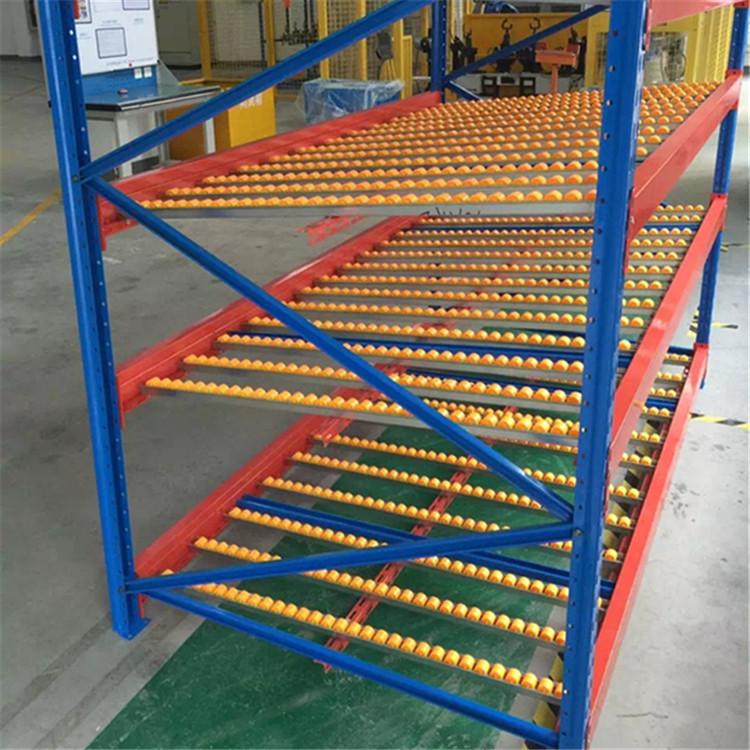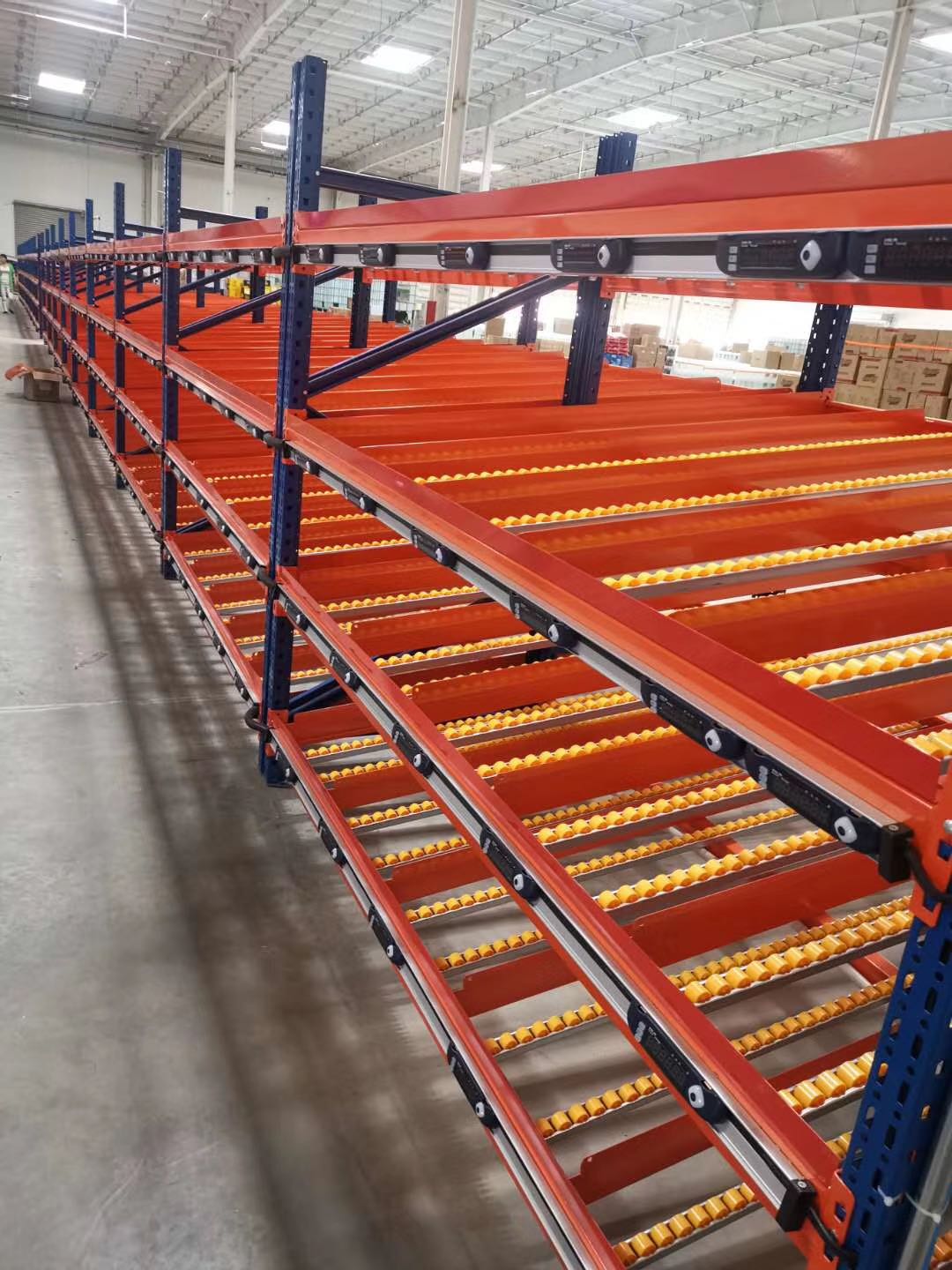In the relentless pursuit of warehouse optimization, maximizing cubic space and ensuring operational flexibility are paramount. Among the arsenal of storage solutions, long span shelving stands out as a versatile and robust workhorse. Designed to handle substantial loads while offering exceptional adaptability, long span shelving systems are the backbone of countless efficient distribution centers, manufacturing facilities, archives, and retail backrooms. This comprehensive guide delves into the five core aspects that make long span shelving an indispensable choice for modern storage challenges.

1. Core Design & Structural Advantages: The Foundation of Strength and Flexibility
At its heart, long span shelving, also known as rivet shelving or boltless shelving, is defined by its unique beam-and-frame construction.
Roll-Formed Steel Components: Constructed primarily from heavy-duty roll-formed steel, long span shelving components are engineered for strength and durability. The upright frames (or columns) feature punched holes at regular intervals.
The "Long Span" Beam: The namesake feature is the beam. Unlike traditional shelving with short, fixed-length shelves, long span shelving uses beams that can span significant distances between uprights – typically 4 feet to 12 feet or more – without requiring intermediate vertical supports. These beams lock securely into the punched holes on the uprights.
Boltless Assembly (Rivet Design): A key innovation is the boltless connection system. Beams typically feature integral rivets or hooks at their ends that slot directly into the punched holes of the uprights. This allows for incredibly fast, tool-free (or minimal tool) assembly, disassembly, and reconfiguration. No nuts, bolts, or specialized tools are needed for the core structure.
Decking Options: The open framework created by the beams is filled with various decking materials depending on the application:
Particle Board/MDF: Economical for lighter loads, retail display backing.
Wire Mesh Decking: Excellent for ventilation, visibility, and allowing light/airflow. Prevents debris accumulation.
Steel Sheet Decking: Provides a solid surface for small items, maximum support for heavy, concentrated loads.
Slatted Wood Decking: Traditional look, good for certain retail or archive environments.
Adjustability: The punched hole design allows shelf heights to be adjusted in increments of 1.5 inches or 2 inches vertically, providing immense flexibility to accommodate products of vastly different sizes.
2. Unparalleled Applications: Where Long Span Shelving Excels
The inherent flexibility and strength of long span shelving make it suitable for a remarkably wide array of environments and storage needs:
Warehousing & Distribution Centers: The primary domain. Ideal for storing bulk goods, smaller palletized loads (using pallet supports), slower-moving SKUs, spare parts, packaging materials, and work-in-progress (WIP) inventory. Its density and adjustability support efficient space utilization.
Manufacturing Facilities: Stores raw materials, components, tools, fixtures, and finished goods near production lines. Easy reconfiguration adapts to changing production needs.
Retail Backrooms & Stockrooms: Provides organized storage for overstock, seasonal items, promotional materials, and supplies. Wire decking versions facilitate easy cleaning.
Archives & Records Management: Steel decking or particle board provides solid support for boxes, files, and binders. Adjustable shelves accommodate various box sizes. Open design aids organization.
Libraries & Media Collections: Supports books, media, and archival materials effectively.
Automotive Parts & Supplies: Handles a wide variety of part sizes and weights, from small fasteners to bulky components.
Cold Storage & Freezer Warehouses: Properly specified (galvanized or stainless steel) long span shelving withstands harsh, humid, and cold environments. Wire mesh decking prevents ice buildup.
Garages & Workshops: Provides sturdy, organized storage for tools, equipment, automotive supplies, and household items.

3. Key Benefits Driving Adoption: Efficiency, Economy, and Adaptability
Choosing long span shelving delivers tangible advantages over other storage systems:
Exceptional Flexibility & Reconfigurability: This is arguably the biggest benefit. Changing shelf heights or moving entire bays is simple and fast with the boltless design. Businesses can easily adapt to evolving inventory profiles without replacing the entire system.
High Storage Density: The long spans between uprights minimize the "aisle space" taken up by the shelving structure itself, maximizing the actual storage footprint per square foot of floor space. This is crucial in high-rent areas.
Rapid, Cost-Effective Installation: Boltless assembly drastically reduces installation time and labor costs compared to systems requiring bolted connections or welding. This also translates to lower future reconfiguration costs.
Optimized Accessibility: While denser than some systems, long span shelving still provides good access to stored items, especially when combined with wire decking. Selective pallet racking might offer deeper storage but is less flexible for smaller items.
Durability & Longevity: Made from robust steel, properly loaded and maintained long span shelving offers a long service life, providing excellent return on investment.
Cost-Effectiveness: Compared to structural pallet racking or automated systems, long span shelving offers a very attractive price point per square foot of storage, especially for medium-duty applications.
Scalability: Systems can start small and be easily expanded upwards (adding height levels) or outwards (adding more bays) as storage needs grow.
Visibility & Organization: Especially with wire decking, contents are easily visible, aiding inventory management and order picking. Bin boxes, dividers, and drawers can be integrated for further organization.
4. Understanding Capacity & Safety: Load Ratings and Critical Considerations
Safety is non-negotiable in storage. Understanding the capacity and limitations of long span shelving is vital:
Uniformly Distributed Load (UDL) vs. Concentrated Load: Long span shelving capacity is primarily rated for UDL – meaning the weight is spread evenly across the entire shelf deck. Concentrated loads (heavy weight on a small area) significantly reduce the safe capacity. Always refer to manufacturer load tables.
Beam Span is Critical: The load capacity of a shelf decreases dramatically as the beam span increases. A beam spanning 4 feet can hold much more per level than the same beam spanning 10 feet. Manufacturer engineering data dictates safe capacities for every beam type and span length.
Decking Capacity: The decking material (wire, steel, particle board) also has its own load rating, which must be considered alongside the beam capacity. The lower rating governs the shelf's safe capacity.
Upright Frame Capacity: The overall upright frame has a maximum load capacity per bay, considering the cumulative weight of all shelf levels and their contents.
Importance of Load Signs: Every bay should be clearly labeled with its maximum UDL per level and the maximum bay capacity. This is a critical safety practice.
Proper Loading: Loads must be distributed evenly across the shelf deck. Avoid point loading or overhang beyond the beam supports. Heavier items should be stored on lower levels.
Seismic Considerations: In earthquake-prone areas, specific seismic bracing kits and installation protocols are required for long span shelving to prevent collapse. Engineering consultation is essential.
Regular Inspections: Implement a schedule for inspecting long span shelving for damage (bent beams, damaged uprights, loose connections), overloading, and stability. Address issues immediately.
5. Planning, Implementation & Integration: Getting the Most from Your System
Successful deployment of long span shelving requires careful planning:
Accurate Needs Assessment:
Inventory Profile: Catalog item dimensions, weights (average and peak), quantities, and turnover rates (fast/slow moving).
Access Requirements: Determine picking frequency and method (manual, cart, forklift/pallet jack - dictating aisle widths and lower level heights).
Growth Projections: Factor in anticipated future storage needs.
Space Planning & Layout Design:
Floor Plan: Measure the available space precisely, noting columns, doors, sprinklers, and other obstructions.
Bay Configuration: Determine bay lengths (number of uprights), depths, and heights based on inventory and space. Optimize for density and accessibility.
Aisle Widths: Ensure sufficient space for personnel, carts, or material handling equipment (MHE). OSHA guidelines provide minimums for pedestrian aisles.
Component Selection:
Beam Length & Gauge: Select appropriate beam spans and thicknesses (gauges) based on required load capacities and planned decking.
Upright Height & Gauge: Choose frame height and gauge strength to support the cumulative planned loads per bay.
Decking Type: Match decking to item type, weight, and environmental needs (e.g., wire for ventilation, steel for heavy point loads).
Integration with Other Systems:
Mezzanines: Long span shelving often forms the structure for storage mezzanines, creating valuable vertical space.
Pallet Racking: Can be used alongside pallet racking for smaller, non-palletized items or slower-moving pallets.
Conveyors & Picking Systems: Layouts can be designed to integrate with material flow systems.
Professional Installation: While DIY assembly is possible for small setups, professional installation ensures the long span shelving is level, plumb, properly anchored (if required, especially for tall or seismic installations), and meets all load and safety specifications.
Accessories: Enhance functionality with dividers, bin rails, drawer units, label holders, end panels, and safety barriers.
Long span shelving remains a cornerstone of efficient storage strategy for a compelling reason: its unmatched blend of flexibility, strength, density, and cost-effectiveness. Its boltless design empowers businesses to adapt swiftly to changing demands, while its robust steel construction ensures reliable performance under significant loads. From bustling distribution hubs to organized retail backrooms and specialized archives, long span shelving provides a practical, scalable, and safe solution for maximizing vertical space and streamlining operations. By understanding its core design principles, diverse applications, significant benefits, critical safety aspects, and proper implementation strategies, businesses can leverage long span shelving to build a storage infrastructure that drives efficiency, organization, and long-term value. When versatility and efficient space utilization are the goals, long span shelving consistently delivers.







